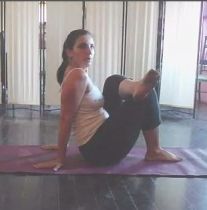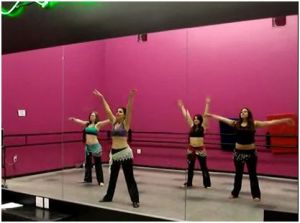 Flexibility is essential in belly dance. It gives us the range of motion to complete our movements with ease and grace. The field of exercise science has done quite a few flip-flops over the years in its recommendations on safe and effective stretching. As new research emerges, these change and improve . If your main experience with flexibility exercises came from your high school P.E. class, or someone who isn’t up to date on the most current knowledge, it may be time to re-think when and how you stretch.
Flexibility is essential in belly dance. It gives us the range of motion to complete our movements with ease and grace. The field of exercise science has done quite a few flip-flops over the years in its recommendations on safe and effective stretching. As new research emerges, these change and improve . If your main experience with flexibility exercises came from your high school P.E. class, or someone who isn’t up to date on the most current knowledge, it may be time to re-think when and how you stretch.
- The most common type of stretching is static stretching and this is generally considered the safest and most effective for the majority of people and their activities. In static stretching, you take the position to the point of a slight stretch, without causing pain. Hold the position for 15 to 30 seconds, breathing and consciously relaxing the muscle for best effect. This is repeated 3 to 5 times for each side.
- Dynamic stretching, for example bouncing down to touch your toes, is not a recommended stretching method for most people. While it does have its applications in certain sports, it is not necessary or recommended for us as belly dancers. This type of stretching can cause muscle strains and tears – stick to static stretching.
- The American College of Sports Medicine’s exercise guidelines for the general population recommend flexibility exercises be done at least twice a week. In training for activities where range of motion is a major feature, such as dance or gymnastics, more frequent – even daily stretching is beneficial, provided it is done following activity when the muscles are warm.
- The muscle groups that are most likely to be tight are the hamstrings, hip flexors, calves and chest. Be sure to include them all in your flexibility routine.
- Once upon a time, it was thought that stretching after a strenuous workout prevented DOMS (Delayed Onset Muscle Soreness). This is the kind of soreness that hits you the day after an 8-hour dance workshop and sticks around for the next two days. We now know that it won’t prevent DOMS , but it won’t make it worse either. Proper stretching after activity is always a good idea.
- Research in the past 10 years has recommended that stretching be saved for post-workout, but that’s not the whole story. The ACSM does recommend this as a general rule, but has also stated that for activities such as dance and gymnastics, which require a high degree of flexibility in performance, some stretching should be done before activity. It still needs to be done on warm muscles however, so a dynamic warm up needs to comes first. Deep, long-held stretches are still most effective after dancing.
For a variety of stretches useful for belly dance, check out some of the Saturday Stretch “Daily Bellydance Quickies” on my YouTube channel


